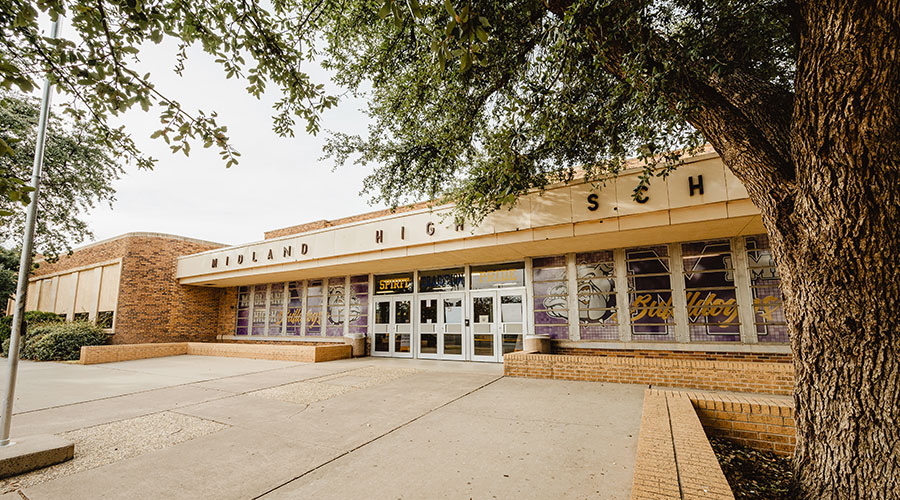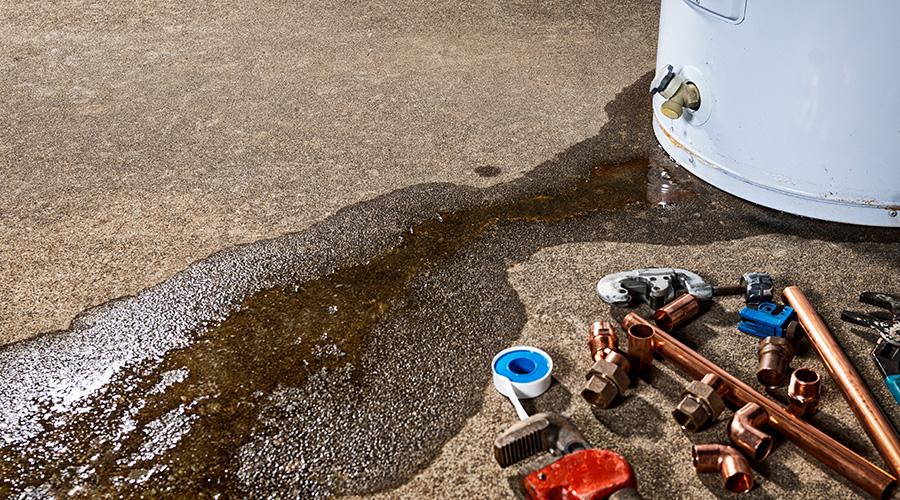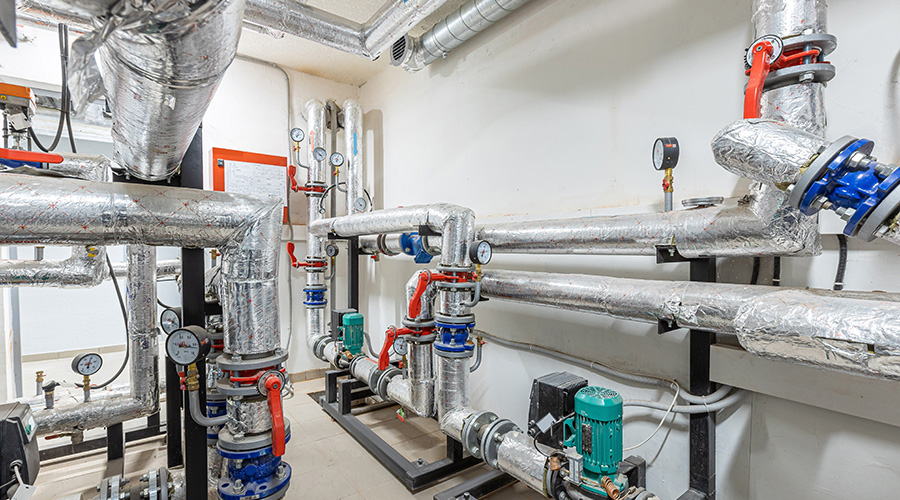Chiller Replacement: Making the Case
Gathering and analyzing data builds the foundation needed to make a cost-effective decision
There is no question that chillers are big-ticket items. In most facilities, they are one of the most expensive pieces of equipment. They also are the single biggest users of electricity in those facilities.
Combine these factors with a chiller’s relatively long service life of 20-25 years, and it is easy to understand why engineering and maintenance managers move cautiously when it comes to making decisions on chiller replacement. Some managers move too cautiously, however, believing that as long as a chiller is running, it is not worth the expense of replacing it.
But these managers fail to understand that just because a chiller is operating does not mean it is operating efficiently. And with operating costs over the life of a chiller greatly exceeding its initial cost, replacing an older chiller with one that delivers higher efficiency can greatly reduce overall electricity costs.
While reduced operating costs is a strong motivation to replace older chillers, managers also must weigh other factors, including the chiller’s condition, age and reliability, how building loads have changed, and a chiller’s maintenance requirements. Only by considering the impact chiller replacement can have on these factors can managers determine the true value of replacing their facilities’ chillers.
Operating Efficiency
Many older centrifugal chillers have full-load operating efficiencies of 0.80-0.90 kW/ton, assuming they are in good operating condition and have been well maintained. Poorly maintained chillers will have much lower operating efficiencies.
In contrast, most of today’s new high-efficiency chillers have a full-load efficiency of about 0.50 kW/ton. More importantly, new chillers have higher part-load efficiencies than older chillers. And with most chillers operating 95 percent of the time or more under part-load conditions, improved full-load and part-load operating efficiencies translate into significant energy cost savings.
To accurately estimate energy savings that would be produced by replacing an existing chiller, managers must develop a load profile for the existing chiller. A load profile identifies a chiller’s energy use in kW/ton over the entire operating range for that chiller in that facility, from full-load to the minimum load the chiller experiences.
Armed with this information, a manager can compare that load profile to the manufacturer’s load profile for the replacement chiller under consideration. By knowing the number of hours a chiller operates at each load, managers can quantify the resulting energy savings. For more on load profiles, see the accompanying article.
Oversizing Chillers
Buildings today are in a constant state of flux. Occupants and operations change, as do buildings themselves. If a chiller was installed even as recently as 10 years ago, chances are the facility and its cooling loads are far different today than when the chiller began operation.
In many cases, these changes in loads result in a significant oversizing of the existing chiller, particularly if the organization has upgraded the HVAC systems and envelope to improve energy efficiency.
Oversizing a chiller results in decreased annual operating efficiency. While installing a variable-frequency drive (VFD) will improve part-load efficiency, it is more efficient to properly match the size of the chiller to the cooling load.
Managers can do this by reviewing the load profile for the building, determining the maximum cooling load the chiller must meet, and determining the number of hours per year does that load occurs. While managers should reserve some spare capacity for future facility changes, eliminating oversizing will improve annual operating efficiency.
An oversized chiller seldom is sufficient grounds for replacing a chiller, but it is an important factor to consider when evaluating chiller options.
Maintenance and Reliability
All building chillers require ongoing scheduled and breakdown maintenance. And while only minor differences exist in the cost of most scheduled maintenance requirements for chillers of the same type and size, unscheduled maintenance and repair costs vary widely, even for the same model chiller.
Just as important as direct maintenance costs are indirect costs associated with interruptions of service resulting from chiller breakdowns. So it is important that managers conduct a thorough condition assessment of the chiller.
Start by going through the chiller’s operating log for at least two years to quantify costs associated with chiller maintenance. Identify service interruptions that occurred as the result of breakdowns or unscheduled maintenance, and estimate the cost of those interruptions to the operation.
Pay particular attention to heat-exchanger tubes. Have technicians eddy-current-test all chiller tubes to determine if any have been damaged. Review operating logs to determine the maintenance history of the tubes. If a number of tubes have required repair or plugging, it is a negative reflection on the chiller’s overall condition and operating efficiency.
Damaged tubes indicate that either the water-treatment system has been inadequate or that the chiller is nearing the end of its service life. In either case, the presence of more than just a few damaged tubes is a strong factor in considering replacing a chiller.
Inspect all chiller system components, including the primary drive motor, starters and wiring. Review the chiller log to determine the refrigerant leak rate for the chiller.
Typical annual leak rates found in older chillers fall in the range of 5-10 percent. New standards limit chiller leak rates to 5 percent, and new chiller designs can achieve leak rates down to 1 percent. Higher leak rates cost operators in replacement refrigerant charges and lower a chiller’s operating efficiency.
Next, identify the type of control system installed on the chiller. Older control systems originally used pneumatics, while newer ones use digital-based controls, which are more accurate and efficient. Identify if the chiller has been fitted with a VFD to improve its part-load performance.
Most chillers can operate effectively for 20-25 years if properly maintained, and many have operated for 30 years or more. But a chiller’s age by itself is not sufficient grounds to keep or replace a chiller. For reasons that vary widely, some chillers require more frequent maintenance than others do.
They might need ongoing attention or more frequent overhauls. Their operation might be unreliable, resulting in frequent outages and service interruptions. Or they simply might be lemons, a factor that managers must consider when evaluating replacement.
After completing the evaluation of chiller options, if replacement is the best option, managers must make the case to support funding the project. Perform a life-cycle cost analysis for the replacement chiller, and present findings showing several options, including the costs for a new chiller and the costs for keeping the existing chiller, including service interruptions.
Managers in all types of facilities compete with other projects for funding. But if the analysis of chiller performance and condition — and the resulting decision to replace it — is complete and is presented clearly, chances tend to improve greatly that the project will receive funding.
Load Profiles: A Closer Look
Managers can use two methods to develop a load profile for an existing chiller: Simulate a load test, or record operating parameters over a period of several months. For either method, managers will have to collect data on electricity use, chilled-water- supply and return temperatures, condenser-water-supply and return temperatures, and chilled- and condenser-water flow rates.
If a chiller is connected to an energy management system, use the system’s trend function to collect data. In the absence of an energy management system, one option is to install portable data-logging systems for the duration of the study.
A simulated load test involves resetting the chiller water temperature and recording the unit’s operating parameters. By resetting the temperature, operators can simulate operation from full-load through all part-load conditions found in the facility.
A simulated load test is quick; all readings are collected over one or two days of testing. On the downside, it is not as accurate as methods that record chiller operation under actual building conditions over a period of several months, and the simulated test does not quantify the hours a chiller operates at each part-load condition.
One alternative is a program that monitors the operation of the chiller over a several months, ideally for the entire cooling system. By constantly monitoring a chiller’s operating characteristics, managers can accurately determine a chiller’s full- and part-load performance, as well as the number of hours that the chiller is operated at each load.
For each test, it is essential that the chiller be in good operating condition and that all required maintenance is performed before the test. Of particular importance are the chiller’s heat-exchanger tubes. Dirty tubes result in lower-than-normal efficiency calculations.
|
Related Topics:











